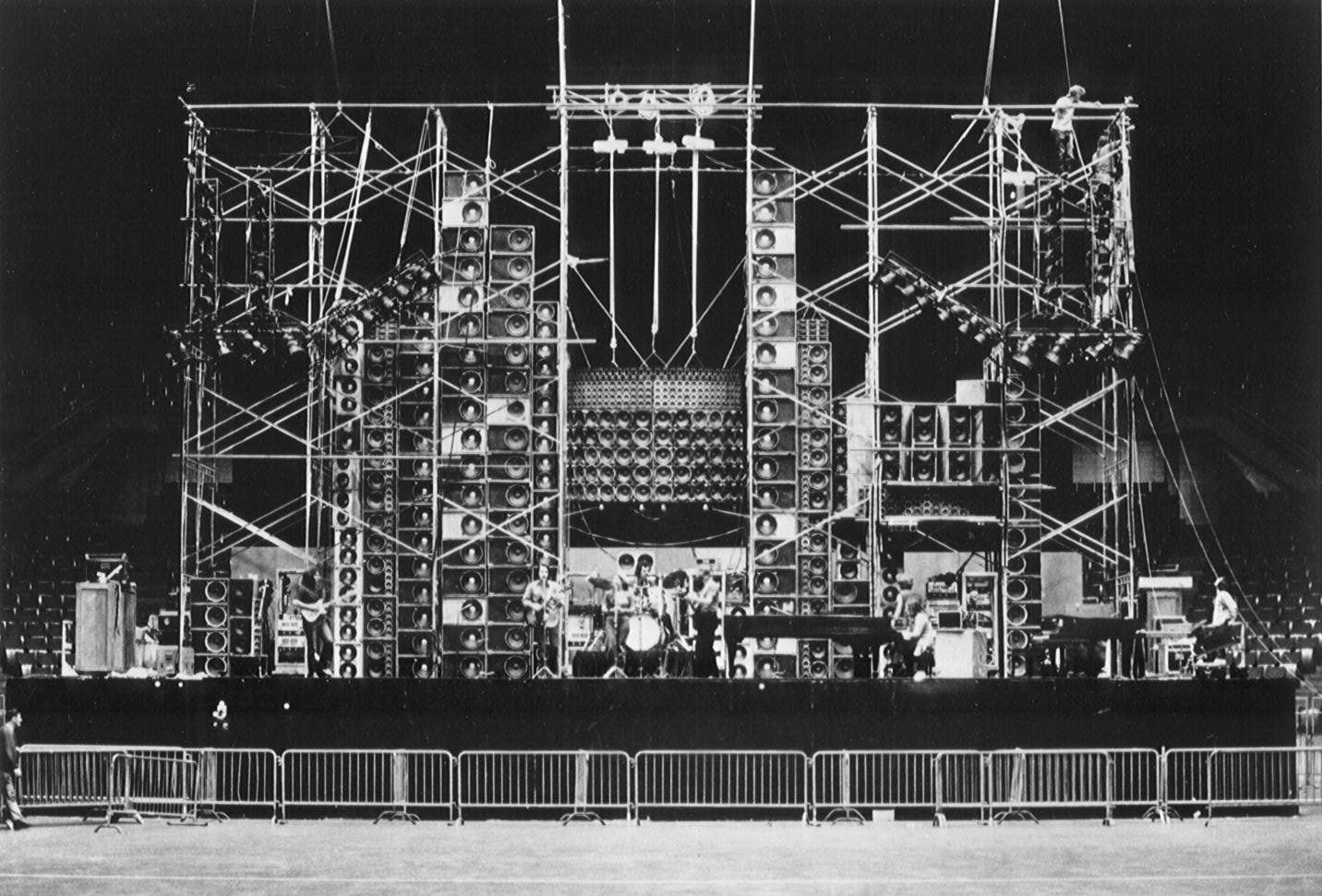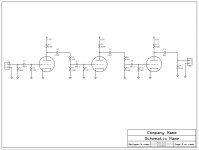Guys, Charles is right, unfortunately.
My take on this is that MEASUREMENTS ARE IMPORTANT! However, measurements that find virtually only VERY LOW LEVELS OF DISTORTION, such as .01% lower order, or .0001% higher order, say to me that this specific DISTORTION is not a significant problem.
However, there are measurements that we don't make, including FM measurements of audio circuits, that might be VERY IMPORTANT. In fact, more important than very, very low static harmonic or IM measurements, due to ear-brain sensitivity to such things. Now, not every FM type distortion can be weighted the same way. Wow and flutter, while annoying in quantity, is not impossible to live with in small amounts. Even loudspeaker Doppler distortion is tolerable in small to even medium size amounts. However, it is a well known 'tradeoff' between horns and direct radiators, and personal sensitivity might push one individual toward one speaker type or another.
I personally have test equipment in my lab that initially cost $50,000 or so, fresh out of the packing box. Today it might be worth $10,000, or less, if I had to replace it, but I do have it handy, and I USE IT!.
Others here try to get away with a $100 multimeter, and dare to insult my test equipment, that while needing an occasional 'kick', is still pretty good. Kind of like criticizing my Porsche (about the same age as my test equipment) by someone who drives his Mom's car, or takes the bus.
My take on this is that MEASUREMENTS ARE IMPORTANT! However, measurements that find virtually only VERY LOW LEVELS OF DISTORTION, such as .01% lower order, or .0001% higher order, say to me that this specific DISTORTION is not a significant problem.
However, there are measurements that we don't make, including FM measurements of audio circuits, that might be VERY IMPORTANT. In fact, more important than very, very low static harmonic or IM measurements, due to ear-brain sensitivity to such things. Now, not every FM type distortion can be weighted the same way. Wow and flutter, while annoying in quantity, is not impossible to live with in small amounts. Even loudspeaker Doppler distortion is tolerable in small to even medium size amounts. However, it is a well known 'tradeoff' between horns and direct radiators, and personal sensitivity might push one individual toward one speaker type or another.
I personally have test equipment in my lab that initially cost $50,000 or so, fresh out of the packing box. Today it might be worth $10,000, or less, if I had to replace it, but I do have it handy, and I USE IT!.
Others here try to get away with a $100 multimeter, and dare to insult my test equipment, that while needing an occasional 'kick', is still pretty good. Kind of like criticizing my Porsche (about the same age as my test equipment) by someone who drives his Mom's car, or takes the bus.
a) All electronics sound the same.
b) We should continue to reduce THD and RIAA equalization error without limit in order to ensure that although all amplifiers sound the same that some are more equal than others.
No-one said those things. Other than you, of course.
I personally have test equipment in my lab that initially cost $50,000 or so, fresh out of the packing box. Today it might be worth $10,000, or less, if I had to replace it, but I do have it handy, and I USE IT!.
Others here try to get away with a $100 multimeter, and dare to insult my test equipment, that while needing an occasional 'kick', is still pretty good. Kind of like criticizing my Porsche (about the same age as my test equipment) by someone who drives his Mom's car, or takes the bus.
Indeed, designing measurements equipement seems to me way more
challenging than trying to cancel the last drops of ppm THD or noises..
A good exemple from a french review of a DIY equipement, back in 1987.
preampli_cc230
I can assure you that such projects were infinitly rare compared
to the multitudes of amplifiers designs...
Attachments
No-one said those things. Other than you, of course.
SY, SY, SY...sigh...
Why do you make comments when you haven't even read the thread?
http://www.diyaudio.com/forums/anal...ch-preamplifier-part-ii-1325.html#post2627081
http://www.diyaudio.com/forums/anal...ch-preamplifier-part-ii-1326.html#post2627216
What a great lawyer you are.No-one said those things. Other than you, of course.
Unfortunately, people interacting with others not only is reading and listening word by word like a machine. Intelligent people also gathers information about what a person does, how someone say something,etc. The picture i have from you, wahab, bonsai, and some others which are on the same argumentation line is pretty close to what John Curl, Charles Hansen or ThorstenL are "putting in your mouth". Maybe you didnt say things explicitly but we are not in the court here are we?
SY, SY, SY...sigh...
Why do you make comments when you haven't even read the thread?
http://www.diyaudio.com/forums/anal...ch-preamplifier-part-ii-1325.html#post2627081
http://www.diyaudio.com/forums/anal...ch-preamplifier-part-ii-1326.html#post2627216
Neither of those posts say that, either. Why do you think you have to make things up rather than arguing with data and evidence?
I completely put words in their mouths....
...In the meantime, go back to your tube circuits. Maybe you will touch the HT line accidentally and it will knock some sense into you.
Yes, you did.
As for the last, I assume that's your substitute for data and evidence?
Well, I will tell you what I think about hi end audio design. It takes: education, measurement, and 'experience (with an open mind)' to be really successful. You have to love the subject, and make it your own. It is not a part-time enterprise.
If you don't feel up to it, then settle down with mid-fi designs, that are far more lucrative, at least to the companies that sponsor them. Work quietly and competently in the background, and hope that your efforts will merit a raise at some point.
Don't expect to be well known and even 'respected' outside of your company, but you can always go home to the wife and kids, knowing that you are not 'shortchanging them' in any way.
The most important thing is to realize they are NOT the same thing. Hi end is like making an F1 racing car, mid fi is like making a Chevy. Both take engineering, but at different levels and investment.
If you don't feel up to it, then settle down with mid-fi designs, that are far more lucrative, at least to the companies that sponsor them. Work quietly and competently in the background, and hope that your efforts will merit a raise at some point.
Don't expect to be well known and even 'respected' outside of your company, but you can always go home to the wife and kids, knowing that you are not 'shortchanging them' in any way.
The most important thing is to realize they are NOT the same thing. Hi end is like making an F1 racing car, mid fi is like making a Chevy. Both take engineering, but at different levels and investment.
serious PA
The GD wall of sound went way beyond PA. It was (for the time) a portable HiFi system for themselves and their fans. It proved too expensive to haul around and they went to Meyers Sound good systems but not as good as the Wall of Sound.
Wall of Sound

IIRC they used McIntosh 2300 as their PA amps and a variety of JBL speaker components wonderful system for listening to music.
Show me a serious PA speaker with less than several percent distortion at contractualy specified SPL's. That is, the PA shall provide 120dB at X feet the fidelity is an N/A.
The GD wall of sound went way beyond PA. It was (for the time) a portable HiFi system for themselves and their fans. It proved too expensive to haul around and they went to Meyers Sound good systems but not as good as the Wall of Sound.
Wall of Sound

IIRC they used McIntosh 2300 as their PA amps and a variety of JBL speaker components wonderful system for listening to music.
The GD wall of sound went way beyond PA. It was (for the time) a portable HiFi system for themselves and their fans. It proved too expensive to haul around and they went to Meyers Sound good systems but not as good as the Wall of Sound.
IIRC they used McIntosh 2300 as their PA amps and a variety of JBL speaker components wonderful system for listening to music.
They play in front of the speaker s wall , so unless the performance
was in play back, wich wasnt the case , they had to use extremely
notching equalisations to tame down the inevitable and huge acoustic
feedbacks..
Not likely to give a hifi reproduction of the grand piano or any other
acoustic instrument used in this stage..
But i guess that the resulting sound was part of their combo s
"sound signature".....
John & Charles
When the baby stops eating and plays with the food it means they are no longer hungry.
But bringing up vacuum tubes (Valves for some) I built this circuit.
All tubes running full gain. With the voltage dividers the input is 100mV and the output about 2.6 V. The distortion I'll show later... any guesses?
ES
When the baby stops eating and plays with the food it means they are no longer hungry.
But bringing up vacuum tubes (Valves for some) I built this circuit.
All tubes running full gain. With the voltage dividers the input is 100mV and the output about 2.6 V. The distortion I'll show later... any guesses?
ES
Attachments
Tube type?
I would bet 12AX7A given the plate load resistors.. Works well with contact potential bias as well. Looks suspiciously similar to what some friends were doing to make gnarly sounding guitar effects/distortion boxes a decade or so ago..
I would bet 12AX7A given the plate load resistors.. Works with contact potential bias as well.
Good guess, these predate putting two triodes in a single case. I wanted to be able to use DC on the filaments and as little possible interaction as possible. The 12AX7 is two of these triodes in one package, according to some.
Good guess, these predate putting two triodes in a single case. I wanted to be able to use DC on the filaments and as little possible interaction as possible. The 12AX7 is two of these triodes in one package, according to some.
I was going to say 6AV6..
I was going to say 6AV6..
I stocked up on the 3's to build mic preamps to drive A/Ds for portable recording use. 2 D cells power the filament and a DC to DC or ten 9 volt batteries do the HV. Using an input transformer keeps out the riff-raff. The diodes allow gain control so peaks don't get to the A/D. Gain can be as low as 20 db to give good drive to the A/D but 40 db allows better limiter action.
- Status
- Not open for further replies.
- Home
- Member Areas
- The Lounge
- John Curl's Blowtorch preamplifier part II

 Charles please take the rhetoric down a notch or two. Continue in this vein and I WILL close this thread.
Charles please take the rhetoric down a notch or two. Continue in this vein and I WILL close this thread.